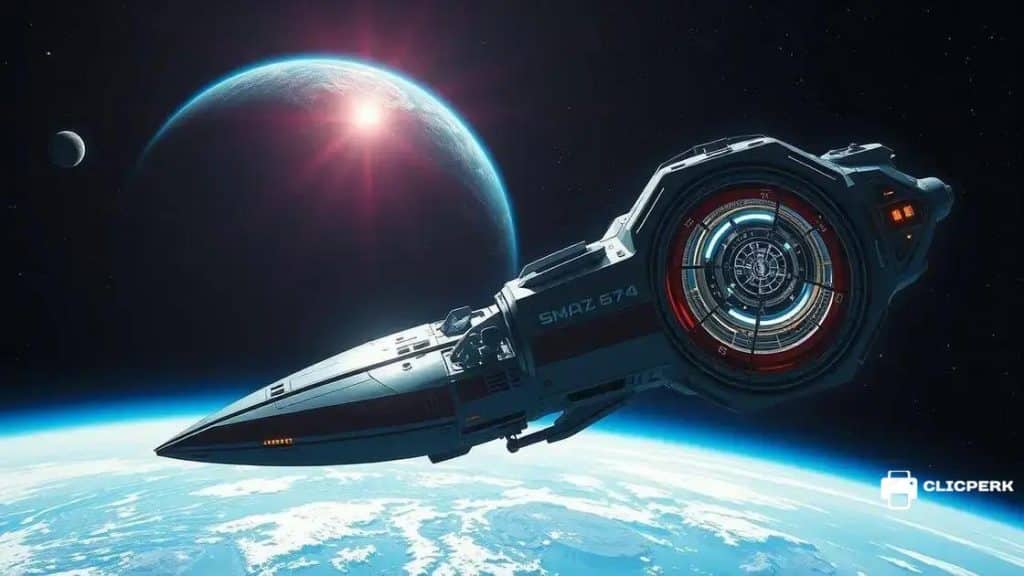Space tourism: preparing for the final frontier of adventure

Anúncios
Space tourism is the practice of traveling to outer space for recreational purposes, offering civilians unique experiences such as weightlessness and stunning views of Earth, facilitated by advancements in technology and commercial spaceflight companies.
Space tourism is not just a concept anymore; it’s becoming a reality for adventurous souls. Have you ever dreamed of floating in zero gravity or gazing at Earth from the stars? In this article, we dive into the fascinating world of space tourism, exploring what it entails and how you might just be among the first to experience it.
Anúncios
What is space tourism?
Space tourism is an exciting new frontier that offers individuals the chance to travel beyond our planet. It involves booking a trip into space, where you can experience weightlessness and see Earth from an entirely new perspective. Imagine floating among the stars!
To understand space tourism, it’s essential to know its history and the companies involved. Over the years, significant advancements in technology have paved the way for commercial flights. These flights are often aimed at providing a unique adventure for travelers, taking them to the edge of space or even into orbit.
The journey to space
Traveling to space is a thrilling experience. It usually begins with extensive training. Future space tourists undergo physical and safety training to prepare for their adventure. This training ensures they understand what to expect during their flight.
Anúncios
- Weightlessness experience
- Safety protocols and emergency procedures
- Capsule overview
Once training is complete, tourists embark on their journey aboard specially designed spacecraft. The excitement builds as passengers blast off and begin their ascent into the void of space. The view of Earth from above is often described as breathtaking, with the planet appearing as a beautiful blue marble against the dark backdrop of space.
Many companies are making space tourism a reality. Major industry players include:
- Blue Origin
- SpaceX
- Virgin Galactic
These companies are competing to offer the most thrilling experiences. Each has its unique approach, with varying destinations ranging from simple suborbital flights to full orbital missions.
As technology continues to evolve, the future of space tourism looks bright. More individuals may soon have the opportunity to travel to space, making it more accessible than ever.
The evolution of space travel
The evolution of space travel is a fascinating journey that has transformed from dream to reality. Initially rooted in science fiction, the quest for reaching the stars began with the vision of pioneers who dreamed of exploring beyond our planet. Over the decades, we have seen significant milestones that paved the way for modern space travel.
Throughout the 20th century, the space race marked a major chapter in the history of space travel. It began with the launch of Sputnik 1 by the Soviet Union in 1957, which was the first artificial satellite to orbit Earth. This event set the groundwork for a competition between nations to advance space exploration.
Key Milestones in Space Exploration
Several significant achievements have shaped the landscape of space travel. These include:
- The first human in space: Yuri Gagarin orbited Earth in 1961.
- The Apollo missions: NASA’s landmark missions that landed humans on the Moon.
- The launch of space shuttles: Enabling reusable spacecraft technology.
In the following decades, space travel evolved further with the introduction of the International Space Station (ISS). This collaborative effort between multiple countries allows astronauts to conduct scientific research and live in space for extended periods.
The Rise of Commercial Space Travel
In recent years, the landscape of space travel has begun to shift dramatically with the rise of commercial companies. Businesses like SpaceX and Blue Origin have started to make space accessible to private citizens, changing the concept of travel into space. Their innovative approaches have introduced new possibilities, including plans for space tourism and lunar missions.
The use of reusable rockets is one of the most groundbreaking changes. These rockets can land back on Earth and be used again, reducing costs and making space travel more efficient. This evolution has made the dream of visiting space more attainable than ever before.
As we look to the future, the evolution of space travel promises more exciting developments. Plans for missions to Mars and beyond are on the horizon, preparing humanity for perhaps the greatest adventure yet.
Challenges faced by space tourism

When it comes to space tourism, there are several challenges that companies and travelers must consider. Although the idea of traveling to space is thrilling, many factors can complicate these adventures. Understanding these challenges is crucial for anyone interested in venturing into the cosmos.
One significant challenge is the high cost associated with space travel. Currently, tickets to suborbital flights can run hundreds of thousands of dollars. This price tag is a barrier for many potential tourists. As technology advances, rates may decrease, but cost remains a substantial hurdle.
Safety and Health Risks
Another major concern is the safety and health risks that come with flying into space. Spaceflight is inherently dangerous, and companies must prioritize the well-being of their passengers. Aspiring space tourists undergo rigorous training to prepare for the physical demands of the journey, which can include:
- Experiencing weightlessness.
- Enduring high G-forces during launch and re-entry.
- Understanding emergency protocols.
Furthermore, the effects of microgravity on the body can be significant. Travelers may encounter nausea or other health issues that could impact their experience. It’s essential for companies to provide thorough pre-flight assessments to ensure that participants are fit for space travel.
Regulatory and Infrastructure Challenges
Space tourism also faces regulatory challenges, as governments must create guidelines to ensure safe travel. This process can be slow and complex, as regulations need to cover various aspects of flight operations, safety standards, and liability issues. The infrastructure required for launching and landing spacecraft is another hurdle that needs to be developed.
Moreover, the environmental impact of increased space flights is a growing concern. Launching rockets generates emissions, and it’s vital to address how this will affect our atmosphere. Companies are exploring cleaner technologies, but this remains a significant challenge for the industry.
Despite these obstacles, the desire for space tourism continues to grow. Awareness and advancements in technology may help address these challenges over time, making space travel a more viable option for many aspiring space adventurers.
What to expect on your first space trip
When you prepare for your first space trip, it’s essential to know what to expect. This journey into the unknown can be thrilling and overwhelming, but understanding the experience can help alleviate anxiety. With advancements in technology, space tourism is becoming more accessible, and many are eager to step into the cosmos.
Your adventure typically begins with extensive training. Before your flight, you will undergo sessions that prepare you for the unique conditions of space travel. Training includes learning about safety procedures, the spacecraft, and what to expect during the journey. This preparation is crucial for your comfort and safety.
Experience the Launch
As the day of your space trip arrives, the launch will be one of the most exciting moments. You will feel immense power as the rocket engines ignite. The experience involves high G-forces during liftoff, which can be intense but exhilarating. You may find your heart racing as you ascend into the atmosphere.
- Feeling the vibrations of the rocket.
- Experiencing weightlessness shortly after reaching space.
- Witnessing Earth from a distance, which is surreal and beautiful.
The sights from the spacecraft will take your breath away. Looking out the window, you’ll see the curvature of the Earth and the blackness of space. Many passengers describe this view as life-changing, providing a new perspective on our planet.
Weightlessness and Microgravity
One of the unique aspects of a space trip is the experience of weightlessness. You will float inside the spacecraft, allowing for a sense of freedom unlike anything on Earth. This sensation can be both thrilling and disorienting, as everyday movements become playful and unique. You can even perform flips and spins, embracing the joy of microgravity.
Your time in space will also include moments of relaxation, where you can take in the incredible views and take pictures. Most companies provide opportunities for you to capture memories and share your experience with family and friends back home.
As your journey comes to an end, you will prepare for re-entry. Understanding the re-entry process is vital, as it involves high speeds and can create strong G-forces again. Brace for the descent and enjoy the thrill of coming back to Earth. You’ll be landing with unforgettable memories and stories to share.
The future of space tourism
The future of space tourism is filled with promise and excitement. As technology continues to advance, the dream of traveling to space is becoming more realistic for many people. Various companies are competing to make space travel accessible to everyone, not just astronauts.
One of the most significant trends shaping the future of space tourism is the development of reusable rockets. These rockets can be launched multiple times, reducing costs and making space travel feasible for more individuals. With companies like SpaceX and Blue Origin leading the way, we can expect to see more frequent flights to space.
Innovations in Space Travel
Innovation is crucial for the expansion of space tourism. Emerging technologies aim to enhance the travel experience and address current challenges. Here are some key innovations:
- Spacecraft with improved safety features.
- Training programs to help tourists prepare for their journey.
- Eco-friendly rocket designs to minimize environmental impact.
A primary focus is also on reducing the time it takes to reach space. Efficient launch systems are being designed to get passengers to orbit quicker than before, allowing for a more convenient travel experience.
Potential Destinations and Experiences
As the industry grows, new destinations are also on the horizon. Beyond simple suborbital flights, future travelers may have the chance to visit:
- The Moon, with hotels planned for future visitors.
- Space stations for scientific research and leisure.
- Potential Mars missions as technology advances.
These destinations promise not just breathtaking views, but unique experiences that blend adventure with learning. For many, the possibility of experiencing life on another celestial body is a thrilling prospect.
The future of space tourism will also see a rise in the involvement of private companies. As competition increases, services may become more diverse and affordable, allowing a broader range of people to participate in space travel.
With these advancements, the dream of exploring space will likely become a reality for more individuals worldwide. Exciting developments continue to emerge, promising unforgettable adventures in the cosmos.
FAQ – Frequently Asked Questions about Space Tourism
What is space tourism?
Space tourism refers to traveling to outer space for recreational, leisure, or adventure purposes, allowing civilians to experience space travel.
How much does a ticket for a space trip cost?
Tickets for space trips can range from hundreds of thousands to millions of dollars, depending on the company and type of experience offered.
What should I expect during a space trip?
You can expect thrilling experiences such as the launch, weightlessness, breathtaking views of Earth, and safety training to prepare for the journey.
Are there health risks associated with space travel?
Yes, potential health risks include experiencing high G-forces during launch and the effects of microgravity, which can cause nausea and other issues.





